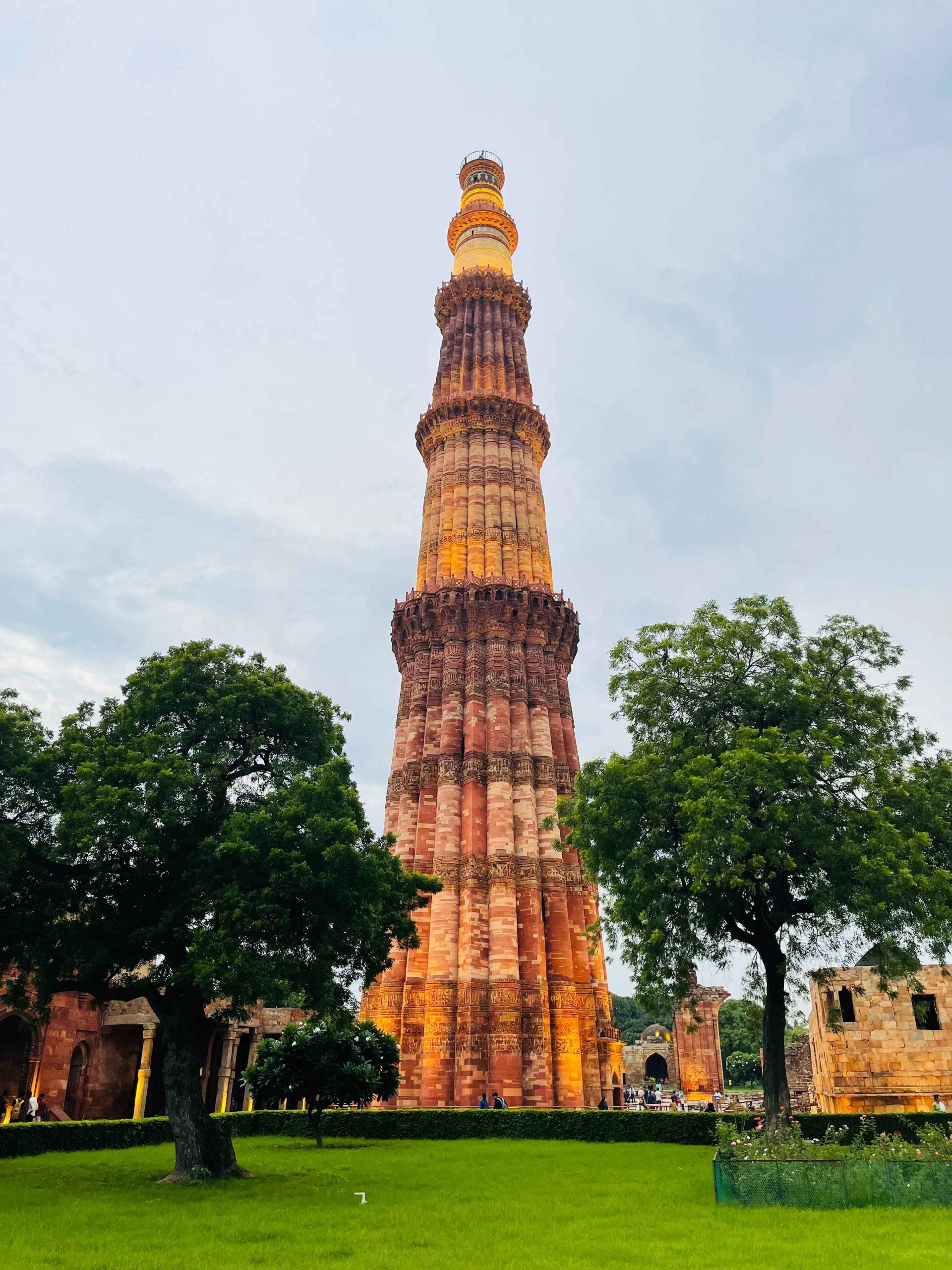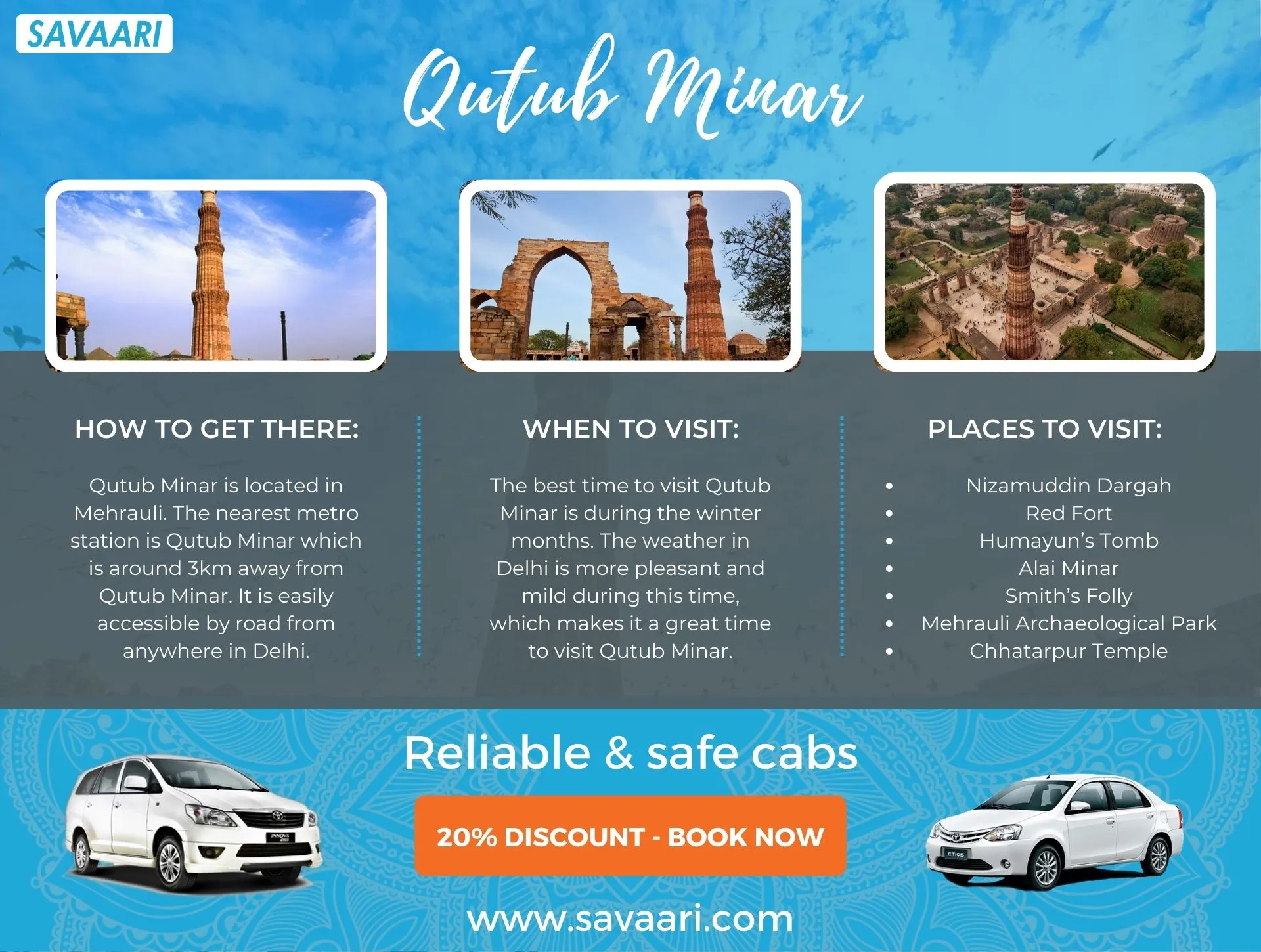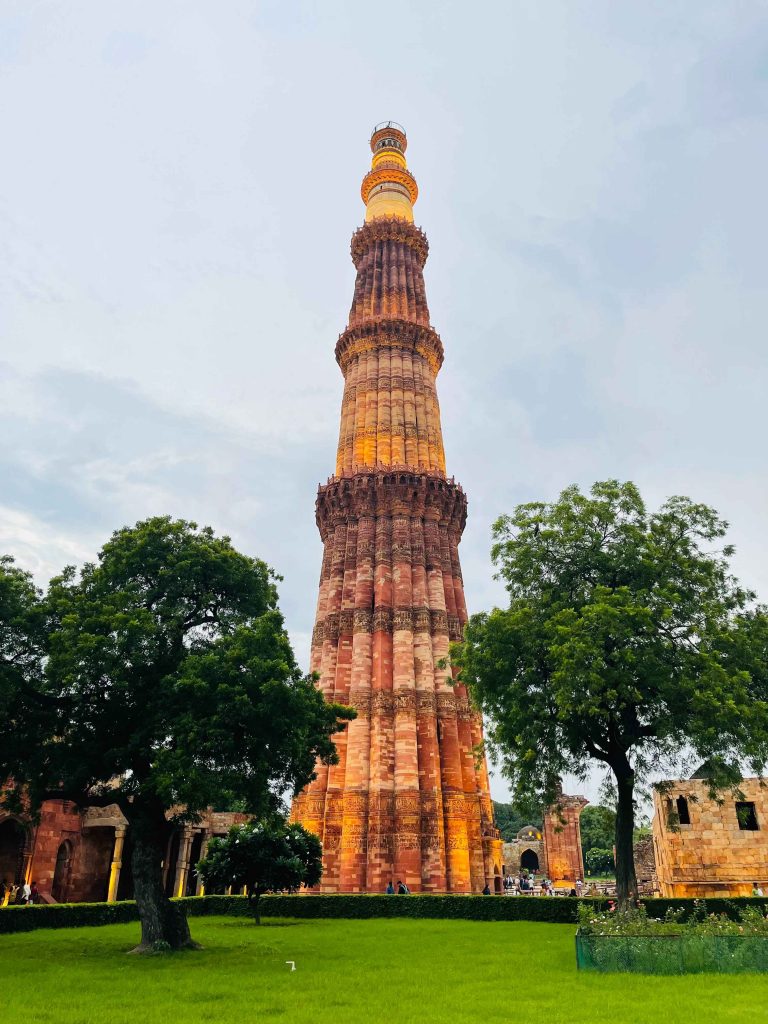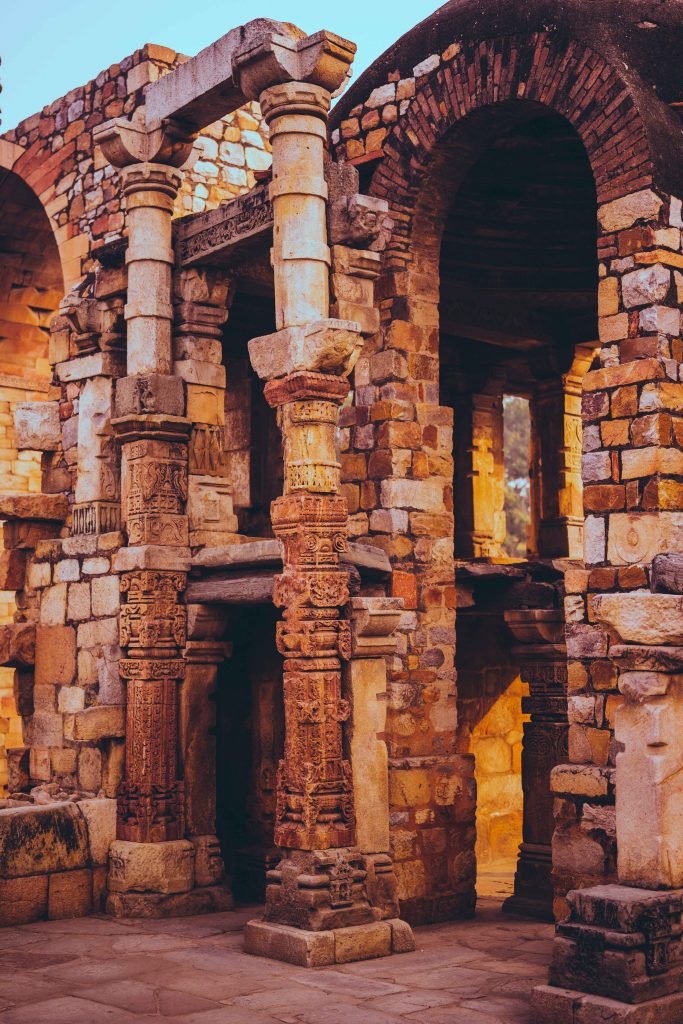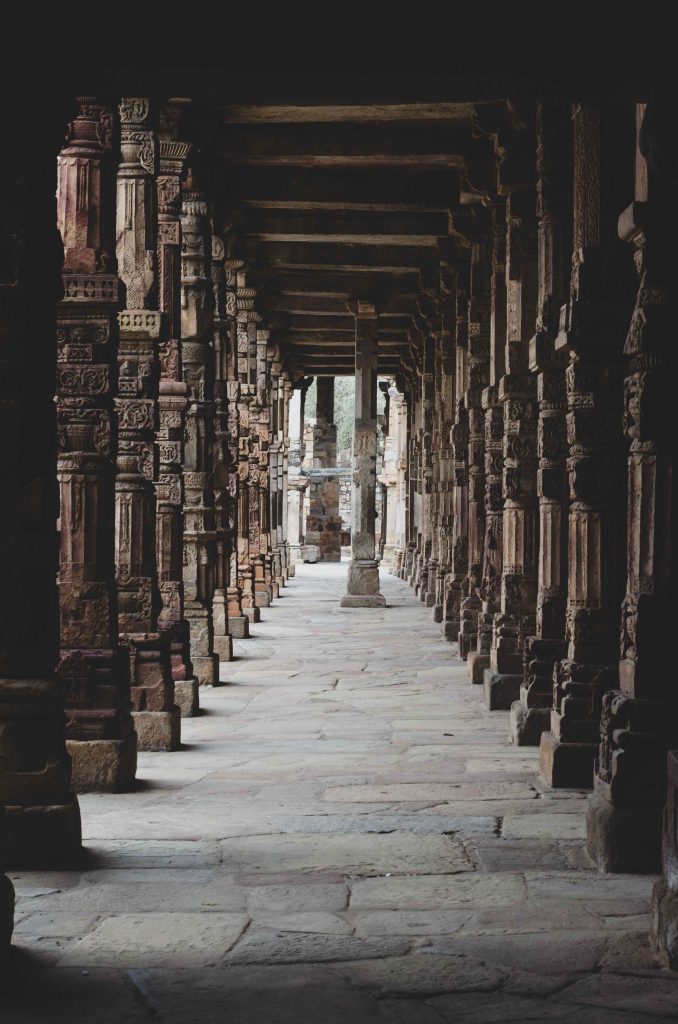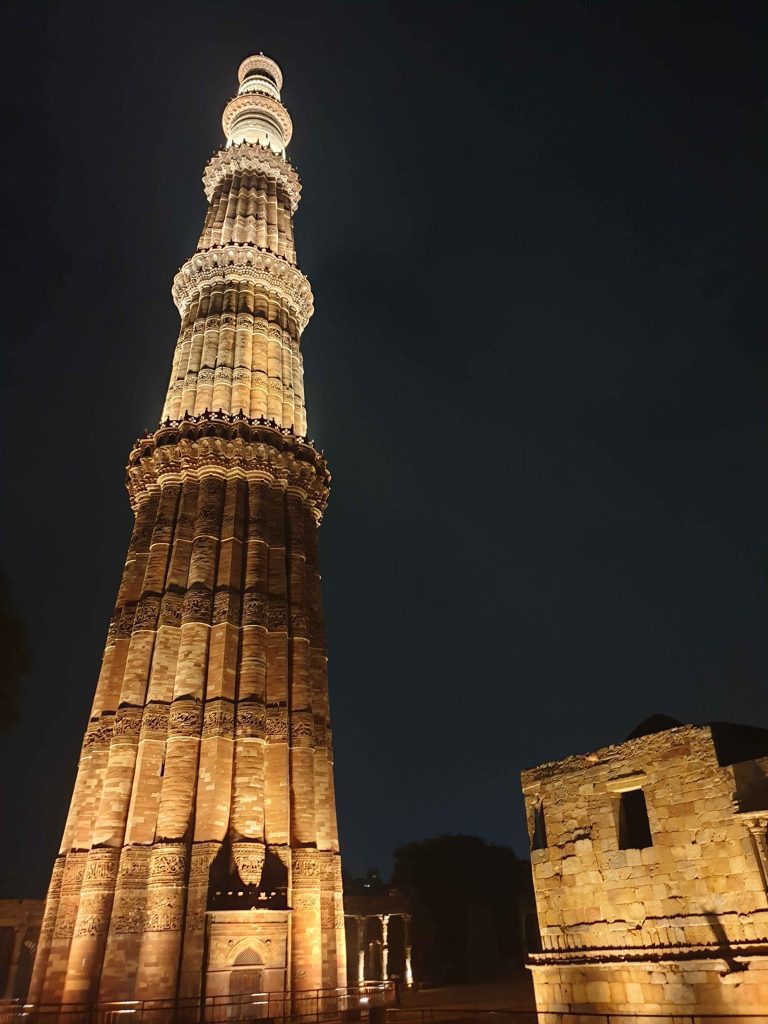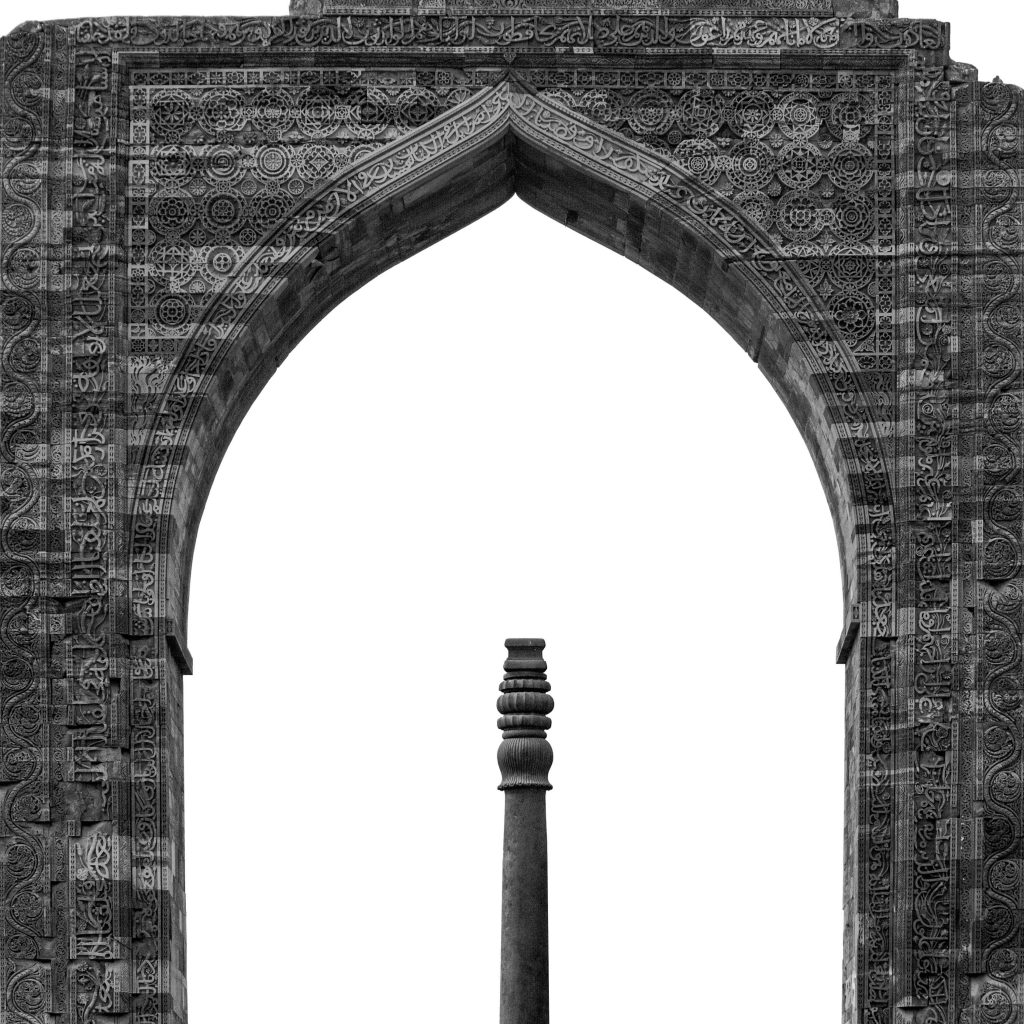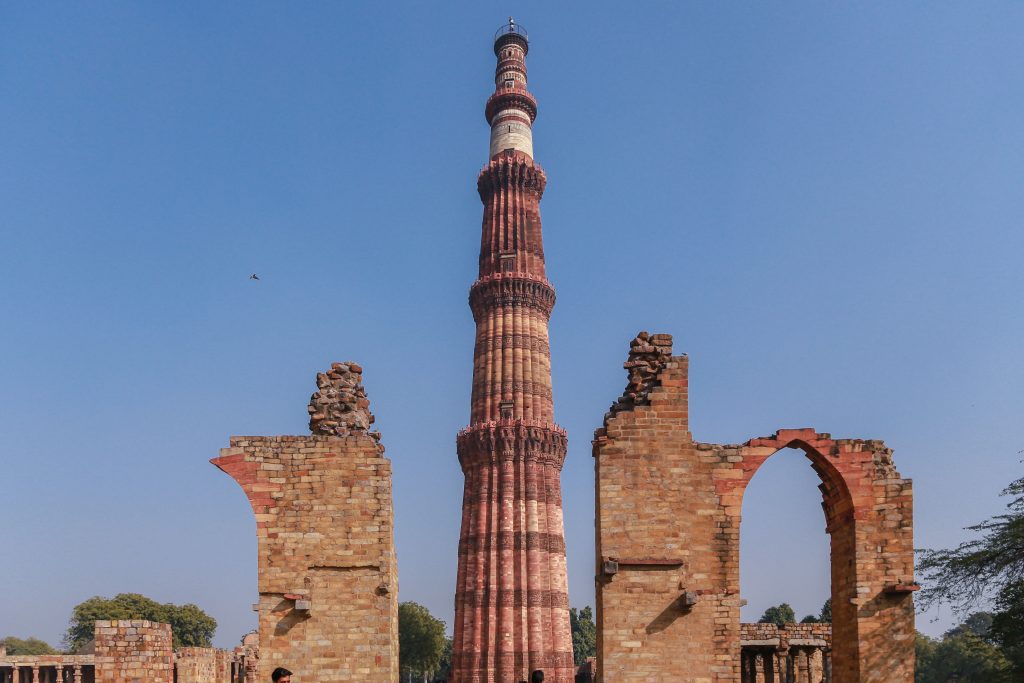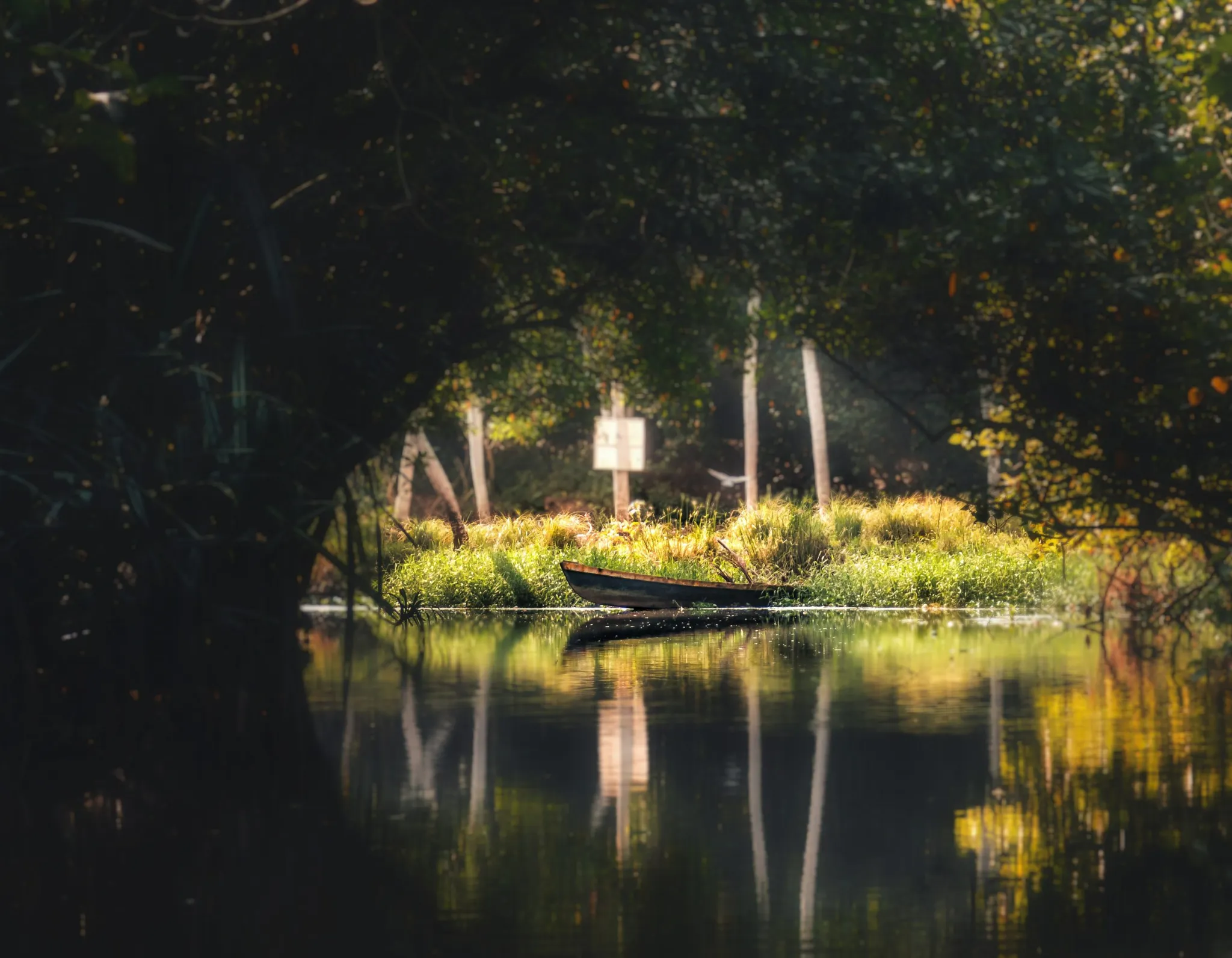The Qutub Minar is an iconic monument of Delhi. It was built by the famous ruler of the time, Qutub-ud-Din Aibak, in 1193, and it has a height of 73 meters (238 feet). The tower is considered an important architectural heritage because of its Indo-Islamic-styled architecture. The best way to soak in the beauty of this monument is by booking a cab in Delhi. Visiting Qutub Minar is more than just looking at its architectural beauty or learning about its history—it’s a fully immersive experience.
Table of Contents
About
Qutub Minar is a tower that stands tall in the heart of Delhi. It was built by the first Muslim ruler of Delhi and is believed to be one of the tallest brick minarets in the world. The tower is 73 meters high and made of red sandstone and marble.
The towering minaret was built with red sandstone and marble and had a spiral staircase made of red sandstone on its exterior. The top floor contains chambers for prayer, as well as a mosque on the second floor. At each corner of the tower were two small towers called guldaste that guards used to keep watch from above; these have since been removed from the structure due to safety concerns.
The Qutub Minar is considered one of Delhi’s most important landmarks because it provides insight into both Islamic architecture and medieval Indian history; additionally, it has been used as an inspiration by many other artists throughout history, including Shah Jahan, who built the Taj Mahal based off this design.
History
Qutub Minar is a tower in Mehrauli, Delhi, India. Qutb-ud-din Aybak built it from 1199 to 1210 CE and was the first Muslim ruler of Delhi.
The seminar was constructed as a victory tower to commemorate his triumphs over the Hindu rulers of this region. Although the construction was completed in 1210, it was damaged by lightning strikes and earthquakes and had to be repaired several times. It was restored by Muhammad-bin-Tughluq, Firuz Shah Tughluq, and Sikandar Lodi in the coming years.
This tower is high and has 379 steps to its top. The word Qutub means “axis” or “pivot”, signifying one’s spiritual pivot (or axis) between the temporal world and the spiritual realm.
There is also a mosque inside the complex that can accommodate many worshippers at any time. The mosque is open only for Muslims during prayers; visitors are allowed to enter its courtyard freely at other times. It is one of Delhi’s most popular tourist destinations and attracts about 3.9 million visitors annually.
Architecture
Qutub Minar’s architecture is a perfect example of the beauty of Islamic architecture. The monument comprises five stories, each with a distinct style and design.
The first floor is rectangular, while the second floor is square. The topmost portion has a diameter of 14.3 meters. It contains an inscription that mentions the names of donors who contributed to building this magnificent structure.
The first gate on entering the complex is called “Peshwa Darwaza”. It has three arches and beautiful carvings all over its walls depicting scenes from Hindu mythology like Bhagavad Gita, Ramayana, Mahabharata, etc.
There are five entrances on all four sides except for one side with two doors. Seven floors can be accessed through these entrances. Each floor has over one hundred rooms on every side except for one side with only two; this room faces east towards Mecca and is called the “Tomb Room”.
Facts about Qutub Minar
The Qutub Minar is one of India’s most famous monuments and one of the world’s tallest free-standing towers. But did you know that…
- It was built by Qutb-ud-din Aibak, an enslaved Turkish who became Sultan of Delhi.
- The minaret was about 5 stories high—but the top two stories have since collapsed.
- The tower has been repaired frequently due to earthquakes and other natural disasters.
- Legend has it that its uppermost story was supposed to be made from gold when it was first built.
- Qutub Minar was built from red sandstone and covered with decorative Indo-Islamic carvings and verses from the Quran.
Comprehensive guide to cover Qutub Minar
The Qutub Minar is one of the most popular tourist attractions in Delhi, and for a good reason. This historical monument is part of a larger complex called the Qutub Complex, including other temples, tombs, and gardens.
Visitors can still enjoy plenty of things at this site despite these limitations:
- They can take pictures from ground level up through the first few stories.
- They can walk around nearby gardens.
- They can explore other buildings within the complex, like a tomb or mosque, if they’re interested in learning more about Islamic and Qutub Minar architecture or culture.
Things to do in Qutub Minar
If you’re looking for things to do near Qutub Minar, we’ve got you covered!
The interior of this tower is also worth checking out—it contains intricate carvings and beautiful designs made by skilled craftsmen over 900 years ago. Some parts of these carvings have been damaged by weather over time, but they’re still beautiful to look at.
The exterior design structure was built using different bricks that were put together in different ways depending on what kind of structure they would be used for (for example, some parts were made using only red bricks while others were built using both red and yellow).
Here are some of the different things you can do when you visit:
- Visit the Tombs of Qutb-ud-din Aybak and Shamsi Badruz Jahan Begum
- See the Dome of Asaf Khan’s Tomb
- See the ruins of Lal Kot Fort and Humayun’s Tomb
- See the Royal Baths (hammam) inside the complex
Places to visit nearby
Tourists can visit many other attractions near Qutub Minar to make their trip more complete. Don’t forget to know the details and the list of places to visit in Delhi city. Some popular destinations include Humayun’s Tomb, Nizamuddin Dargah, Red Fort, Purana Qila and Safdarjung Tomb among others.
There are many other places nearby where you can go for fun activities such as shopping or just exploring the city on foot or by bike. Delhi is known for its delicious street food, so take a food tour of the city and experience the true flavours of this city. Here are some suggestions for things you can do around Qutub Minar:
- Humayun’s Tomb ( Entry Fee: INR 35, For Foreigners: INR 550)
Humayun’s Tomb, located in Delhi, India, is famous for its intricate architecture and stunning design. Humayun’s widow built the Tomb after his death in 1556. The structure was built to resemble a Persian tomb replica, which inspired the design.
People can visit the Tomb and explore the intricacies of its architecture. They can also enjoy a panoramic view of New Delhi from atop the terrace of this mausoleum.
The Tomb is located at a distance of 10 km from Qutub Minar.
- Nizamuddin Dargah
The Nizamuddin Dargah is one of the most-visited destinations in Delhi. The famous shrine attracts thousands of visitors every day. It offers them a glimpse into India’s rich culture, history, and traditions.
The Dargah is located in the Mehrauli area of South Delhi. It can be reached easily by road or public transport. The closest metro station is Chawri Bazar, just a few minutes from the shrine.
- Red Fort ( Entry fee: INR 35, Foreigners: INR 500)
Red Fort is one of the most famous monuments in Delhi. It has been named after the color of its sandstone walls. It was built by Mughal emperor Shah Jahan as a symbol of power and to commemorate his victory over the Mongols in 1638.
How to plan a trip to Qutub Minar?
Planning a trip to Qutub Minar is easy if you follow these simple steps.
- Choose the best time to visit: If you want to skip the crowd, it is best to visit Qutub Minar early in the morning.
- Check out the weather: If it is raining or extremely hot or cold, then plan accordingly by wearing warm clothing or a raincoat or umbrella, depending on the season.
- Make sure you have enough cash on hand as there are no ATMs near Qutub Minar, and you may need some money for food and other things, such as souvenirs from nearby shops.
- The most important step is booking accommodation near Qutub Minar in advance! You can stay at any one of the many hotels that are close by so that you do not have to worry about transportation while exploring this historical monument.
How to reach Qutub Minar?
By Train
The closest railway station to Qutub Minar is Anand Vihar, which is served by the Delhi Metro. The metro system operates on a single line from Anand Vihar to Dwarka Sector 21. You can take an auto or rickshaw from Anand Vihar to Qutub Minar, less than 19 km away. You can also use this route if you’re taking public transportation from other areas of Delhi.
If you’re coming from somewhere else in India, there are many options for getting to Anand Vihar by train. Some trains stop at Old Delhi Station, which is about 15.4 km away from Qutub Minar; others stop at Hazrat Nizamuddin Station (about 13 km away); others stop at New Delhi Railway Station (about 15 km away). Download Savaar’s cab booking app and rent a chauffeur-driven cab to travel from the railway station to any destination.
By Road
Qutub Minar, one of the best UNESCO World Heritage Sites in Delhi, is located in Mehrauli. The nearest metro station is Qutub Minar which is around 3km away from Qutub Minar. It is easily accessible by road in the city, and you can use Savaari’s car rental app to hire a cab service in Delhi, as it is the best way to travel around the city. To travel to Qutub Minar by car, take the Ring Road (NH-2) and exit at Mehrauli Village.
By Flight
If you want to reach Qutub Minar in an instant, you can choose to fly to Delhi. You can book an airport taxi service in Delhi to visit this monument and other tourist sites in the city. Delhi is connected to major cities in India and other parts of the world through air travel.
Regarding air travel, many airlines operate flights from various cities to New Delhi airports. Air India, Jet Airways, Indigo Airlines, and SpiceJet are some airlines.
Best time to visit Qutub Minar
The best time to visit Qutub Minar is during the winter months.
The weather in Delhi is more pleasant and mild during this time, which makes it a great time to visit Qutub Minar.
During the winter, you can enjoy a walk around the area without getting too hot or uncomfortable.
Also, there are fewer crowds at Qutub Minar during this time of year, so you can enjoy your time there without feeling rushed or crowded.
Travel tips for visiting Qutub Minar
- Travel light. There are no lockers at the Qutub Minar, so you’ll need to carry all your belongings. Avoid robbery by not bringing valuable things.
- Wear comfortable shoes. The Qutub Minar is a steep climb; if you’re not used to exercising regularly, it might be hard on your knees and ankles.
- Bring a water bottle and some snacks. The queues can be long, and there’s nowhere to buy food inside the complex of structures; it’s better to have your provisions in case you get hungry or thirsty before your turn comes up!
- The best time to visit Qutub Minar is between October and March.
- To avoid the crowd, visit during the weekdays. Avoid weekends & holidays.
Qutub Minar timings and entry fee
The Qutub Minar timings say it is open from 9:00 am-5:00 pm daily. If you’d like to visit the Qutub Minar, your best bet is to go during off-peak hours when there won’t be many people around (think early morning or late evening).
Qutub Minar Tickets for entry into the complex are INR 30 for Indians. Still, there is an additional fee for foreigners inside the complex with an entry fee of INR 550.
Hotels and Restaurants near Qutub Minar
| Hotel Name | Address |
|---|---|
| Hilton Garden Inn New Delhi / Saket | A4 Dlf Avenue | Saket District Center, New Delhi 110017, India |
| Udman Hotel by Ferns N Petals | N- 82, Panchshila Park, New Delhi 110017, India |
| The Grand New Delhi | 1-3-1024, Nelson Mandela Road | Vasant Kunj – Phase II, New Delhi 110070, India |
Last Updated on August 19, 2024 by V Subhadra
